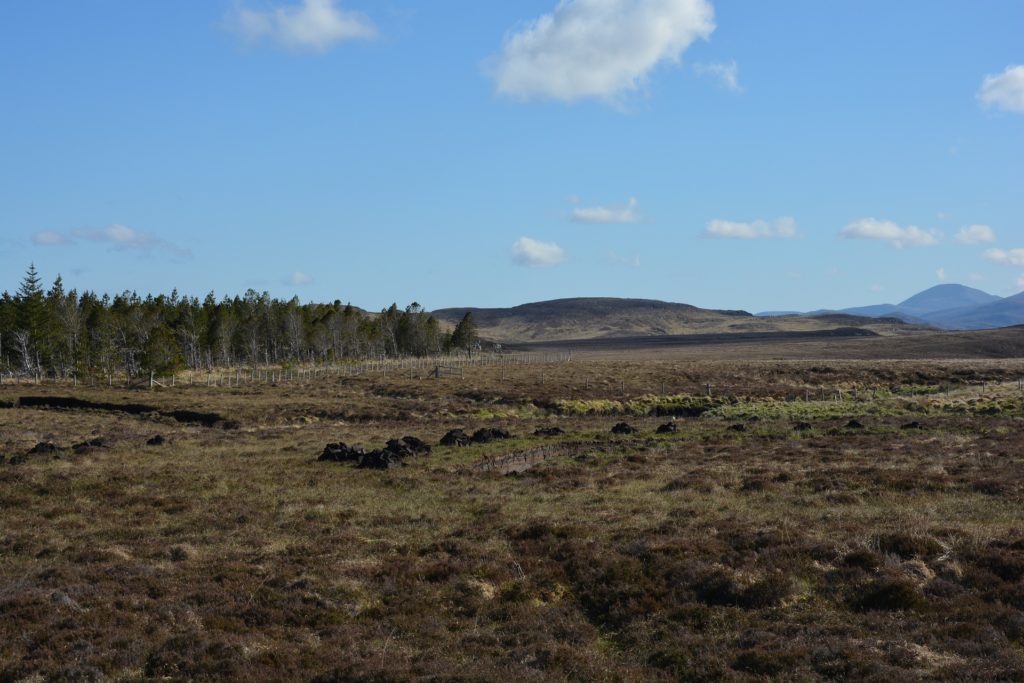A new report by EU Carbon-Connects, and the EU Care-Peat projects found that restoration and maintenance of peatland can dramatically reduce greenhouse gas emission (GHGs), as well as providing financial benefits for farmers through the sale and use of carbon credits and ecosystem service.
Valentina Sechi, Carbon Connects and Van Hall Larenstein University in The Netherlands, said:
“Carbon credits combined with payment for other ecosystem services can potentially provide farmers and other landowners with a good source of income from peatland restoration projects.”
Carbon storage function
Peatlands are land on peat soils that contain at least 80% organic material. These lands must be healthy and functioning (still actively forming peat) They are then theMost efficient space-efficient long term carbon store and sink in planets biosphere.
However, around 15% of the world’s peatlands were drained for agricultural purposes, extracted for horticultural uses, or burned and mined as fuel.
When peatlands are drained or burned they release centuries of stored carbon into the atmosphere, globally amounting for roughly 1.6 gigatons of carbon dioxide equivalent (CO2e) annually – About twice as much is emitted directly by aviation.
CO2eis a metric measure used to compare the emissions from various GHGs on the basis oftheirglobal-warming potential.
More than 5% of all GHGs in Europe are emitted by degraded peatlands.
Niall Brolchin, policy lead for the EU Care Peat project at the National University of Ireland (NUI), Galway, stated:
“Peatland restoration has the potential to reduce emissions across Europe by up to 5% and I see no reason why farmers, landowners and rural communities shouldnt benefit significantly from it.
Restoring and rewetting
Rewetting and restoring damaged or drained peatlands is the top priority for climate change mitigation and reducing GHG emissions.
“By preserving, protecting and restoring peatlands we can reduce emissions and revive an essential ecosystem with high values and co-benefits for climate regulation, biodiversity, conservation and human welfare,” the report stated.
According to the publication:
- You will receive a guaranteed, steady income for the entire duration of the project, usually between 30 and 50 years.
- Chance to make a significant contribution to societal change and to improve water system/hydrology.
- Possibility to manage the land and/or farm it (in the case paludiculture/sustainable grasing management);
- Potential to significantly reduce GHG emissions

Carbon credits and blue credit
A carbon credit can be described as a unit of measurement that indicates the removal of 1t of CO2e or its prevented emission.
Buying such credits allows buyers to offset their GHG emission and sellers to finance the necessary changes to reduce GHG emission.
According to the report – towards a carbon credit and blue credit scheme for peatlands – these lands provide many additional ecosystem services which can potentially yield additional income.
These ecosystem services include the regulation and maintenance water quality and quantity, groundwater replenishment and flow attenuation, socioeconomic benefits, and nursery/long-term habitats that are important for biodiversity.
A blue credit is a tradable certificate for water-related services provided through sustainable peatland management. It is based upon the idea that functional and wet agricultural practices provide additional services to reduce GHGs, e.g. water storage, water retention, and water purification.
Socio-economic models
The primary goal is to target peatlands with the highest levels of GHG emissions, both economically and ecologically. Rewetting smaller sites is possible, but such projects must be subsidised in order to be financially viable.
The report also stated:
“It is clear that blended economic models designed to maximise output for farmers on rewetted peatlands could provide the best overall outcomes taking into account all social, environmental and financial requirements.”
According to price, carbon credits can be a viable source for income for farmers and landowners.
Based on the average cost for monitoring and rewetting in Ireland, a restoration project could yield an income of 377/ha through carbon credits.
However, this article is primarily focused on project cost and other farm costs may be necessary.
Other sources of income include income from ecosystem services, income from tax breaks, subsidies, and income from wet peatlands farming.
Conclusion
The report concludes by highlighting how peatlands can significantly reduce GHGs. However it also points out the need to take financial measures and other concerns.
- To encourage peatland restoration and rewetting, financial measures are required.
- Carbon credit systems by themselves are not effective in supporting sustainable peatland management and restoration.
- Credits issued must be backed by industry standards or accredited to a governmental regulatory system to ensure their credibility.
- The current carbon credit price, while still low enough to be attractive without additional subsidies, is still too low.
- To allow credits from peatland restoration projects to reach investors or the international markets, it is urgent that there are common guidelines for how to measure and account carbon and blue credits at EU-level.
